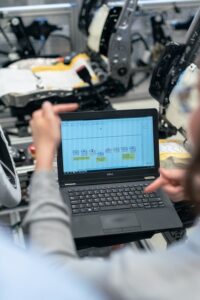 In product development, a product prototype is a necessary part of the overall manufacturing process. From the initial concept of a product to its production, prototyping plays a central role in a product’s lifecycle. Whether a preliminary model of a design to test whether it functions, or later testing models during each stage of production, engineers use prototyping as an important tool in product design.
In product development, a product prototype is a necessary part of the overall manufacturing process. From the initial concept of a product to its production, prototyping plays a central role in a product’s lifecycle. Whether a preliminary model of a design to test whether it functions, or later testing models during each stage of production, engineers use prototyping as an important tool in product design.
Many companies require a “working prototype” before production begins. This is to ensure that the product is functional and that it operates safely and as designed. It’s not necessarily in its final form. It doesn’t have to be. Instead, product prototyping may be utilized in several phases, throughout the iterations of development to thoroughly test and perfect the product. Without testing multiple prototypes, in the long run, it may cost a company in revenue, but also in production runs, by settling on sub-optimal product design.
Thus, product prototype development consists of five basic prototyping phases before that product can be brought to market:
Concept
Conveying a concept is the first phase in a product development lifecycle. An idea for a product may be conceived in a brainstorming session with colleagues or result from an impulsive sketch on a napkin over lunch. Product concept can happen anytime, anywhere. Out of it, the goal of a prototype is to evaluate the idea for development. The model could be a relatively quick 3D printed prototype that can bring the sketch to life in a short period of time or it may be a full scale functional model utilizing CNC machining.
Research and Development
Once a product is conceived, the second phase of prototyping to bring that idea to life requires R&D, research and development. R&D is an innovative process that brings a new idea to life. The importance of R&D at this stage of production is to ensure that the research findings are ready for development. Materials, systems and methods of production are designed and developed through prototyping. Engineers use R&D to generate designs from product concepts and convert them into functional prototypes for testing before commercial production can begin.
Testing
Prototyping not only tests an idea to see if a product functions as conceived but does so at the fraction of its cost. The basic idea of making a product prototype is to validate it by testing. A functional prototype does not have to be its final form to be tested, but testing early and often through each design iteration will bring that product one step closer to perfection and commercial production. Testing is a verification process that may encompass a product’s mechanical properties and performance, aerodynamics, thermal performance, or circuitry and so on. Through testing, data is accumulated and analyzed.
Analyze the Data
One of the more important aspects of testing a product prototype is the accumulation of the test results. The goal of data analysis in a product prototype is to draw insights from data collected during testing, thus, after each test data should be analyzed and evaluated to ensure the product has passed the test. Data analysis further converts the information for the final phase of product development.
Production
Prototyping should prove that your product can be manufactured and is production-ready. The prototype has introduced any preliminary changes from concept to necessary alterations or improvements before full-scale production begins. From concept, design, testing, and analysis, through several iterations to a full-scale, perfectly-functioning prototype, it’s time to move forward toward the first production run.
Product prototypes are necessary and useful in the phases of a product development lifecycle. It is one of the most important steps in any manufacturing process that can provide engineering solutions that can turn your idea into reality. In product prototyping, the engineers at H. Loeb Corporation team work with clients to produce a functioning product that is ready for a full-scale production run.
